
Introduction – Specs and About The Laser Dinghy

- 1 Introduction
- 2.1 The Laser 4.7 / ILCA 4…
- 2.2 The Laser Radial / ILCA 6…
- 2.3 The Laser Standard / ILCA 7…
- 3.1 Hull Specs:
- 3.2.1 Laser Standard / ILCA 7 Rig
- 3.2.2 Laser Radial / ILCA 6 Rig
- 3.2.3 Laser 4.7 / ILCA 4 Rig
- 4 The International Laser Class Association
- 5 The Laser Sailing Community
- 6 The Appeal of Laser Sailing
- 7 The Future of Laser Sailing
- 8 Conclusion
Introduction
The Laser Dinghy, a one-design racing sailboat, was designed by Bruce Kirby and unveiled to the public at the 1971 New York Boat Show. Since then 200,000+ Lasers have been built to date and are sailed across 140+ countries, with its popularity being primarily due to its simplicity and performance.
The original concept for the Laser centered on creating a boat that was easy to build, sail, and purchase, thereby making it accessible to a broad range of sailors. The Laser quickly gained popularity and became the boat of choice for many sailing schools and clubs worldwide. It also rapidly gained recognition as a racing boat and debuted as the single-handed open-class dinghy in the 1996 Olympic Games.
Racing is very competitive due to the one-design restrictions, which means sailors are truly able to test their ability, rather than rely on differences in hull shape, sails, and other gear to gain an advantage.
Besides being used for competition, the Laser is a popular choice for recreational sailing. You can spot these dinghies on lakes, rivers, and oceans worldwide. With its one-design nature, ease of use, and practicality, the Laser Dinghy is set to remain a popular sailboat for many years to come.
The Laser Dinghy – 3 Sailboats In 1

The laser dinghy comes in 3 rig sizes:
- 4.7 / ILCA 4
- Radial / ILCA 6, and
- Full/Standard / ILCA 7 rig
This means that sailors of just about any ability or age can enter the sport, and advance with minimal cost.
Rigging is easy using a sleeved sail over a mast with no stays, and can be launched and sailed single-handedly with ease. Minimal parts mean minimal breakages and maintenance.
The Laser 4.7 / ILCA 4…
utilizes a smaller sail than the Standard rig (4.7m 2 / 50.6 ft 2 which is 33% smaller) and a shorter pre-bent lower mast section. It is ideal for lighter sailors (up to 121lb / 55kg) and beginners.
The Laser Radial / ILCA 6…
uses a smaller sail than the Standard rig (5.76m 2 / 62 ft 2 which is 18% smaller) and a shorter more flexible lower mast section. It is suitable for sailors between about 121lb – 154lb / 55kg – 70kg. The Radial is the most popular class of Laser, as it is suitable for the largest amount of people, including youth, women, and masters. The radial sail can easily be identified by the sail cut in a radial pattern emanating out from the clew.
The Laser Standard / ILCA 7…
has a 7.06m 2 / 76 ft 2 sail, and is more suitable for sailors above about 143lb / 65kg. This rig is suited to heavier sailors in windy conditions where weight, strength, and fitness are critical.

Summary of Key Laser Dinghy Specifications
Hull specs:.
- Length overall (LOA): 4.23m / 13ft 10.5in
- Length waterline (LWL): 3.81m / 12ft 6in
- Beam: 1.42m / 4ft 8in
- Hull Weight: 57kg / 125lb
Laser Sail Area Specs:
Laser standard / ilca 7 rig.
- Sail area: 7.06m 2 / 76 ft 2
- Luff: 5.13m
- Leech: 5.57m
- Foot: 2.74m
Laser Radial / ILCA 6 Rig
- Sail area: 5.76m 2 / 62 ft 2
- Luff: 4.56m
- Leech: 5.01m
Laser 4.7 / ILCA 4 Rig
- Sail area: 4.70m 2 / 50.6 ft 2
- Luff: 4.09m
- Leech: 4.54m
- Foot: 2.48m

The International Laser Class Association
The International Laser Class Association (ILCA), a global organization with regional sites, governs the Laser class of sailboats. The organization is responsible for developing and enforcing the class rules, which ensure that all Laser boats are built to the same specifications and are eligible to compete in official Laser regattas. The Laser Class Association also organizes and oversees major regattas and championships, including the Laser World Championships and the Laser Masters World Championships.
Membership in the Laser Class Association is open to anyone who owns or sails a Laser boat. Members have access to a wide range of benefits, including access to official class materials and publications, as well as opportunities to compete in official Laser events. The Laser Class Association also offers support and guidance for sailors who are interested in organizing their own Laser regattas.
The Laser Class Association plays a vital role in promoting and supporting the Laser class of sailboats and is a great resource for anyone who is interested in Laser sailing.
The Laser Sailing Community
The Laser sailing community is a vibrant and passionate group of sailors who share a deep love for the sport. From beginners and avid enthusiasts to professional athletes, this global community is bound by a common bond – the thrill of sailing the Laser. As one of the most popular sailing classes worldwide, Laser sailors come from diverse backgrounds, cultures, and age groups, united by their shared passion for the sport.
Laser sailing’s popularity extends across various regions, making it a truly international phenomenon. From the shores of Australia to the coasts of Europe, and the lakes of North America, the Laser class has a widespread following. Its appeal lies in the boat’s versatility, allowing sailors to compete in a wide range of sailing conditions, from challenging regattas to more relaxed lake racing. This popularity has fostered a thriving competitive racing circuit, attracting skilled sailors to local, national, and international events.
One of the most cherished aspects of the Laser sailing community is the camaraderie and sportsmanship among its members. Whether on the water competing fiercely during races or on shore sharing stories and experiences, Laser sailors exemplify a strong sense of friendship and mutual respect. Sailors often support and encourage each other, both in victory and defeat, creating a welcoming and supportive atmosphere for newcomers and seasoned sailors alike. The camaraderie extends beyond the racecourse, with events often turning into social gatherings where lifelong friendships are forged.
In the Laser sailing community, it’s not just about winning races; it’s about being part of a global family that shares a profound connection to the sea and the sport of sailing. The sense of unity and passion that emanates from this community is what makes Laser sailing not just a sport but, for many, a way of life. Whether you’re an aspiring sailor or a seasoned competitor, joining the Laser sailing community opens doors to an unforgettable journey filled with exciting challenges, lasting friendships, and the sheer joy of sailing.
The Appeal of Laser Sailing
Laser sailing offers a unique and attractive experience that captivates sailors of all levels. Its versatility, simplicity, and accessibility make it an ideal choice for both beginners dipping their toes into sailing and seasoned sailors seeking thrilling challenges on the water. The statement “It’s easy to learn but hard to master” describes it well and explains why it is so popular.
At the heart of Laser sailing’s appeal is the boat’s remarkable agility and responsiveness. The Laser’s lightweight hull and sensitive controls allow sailors to feel intimately connected with the water, empowering them to navigate with precision and grace. Whether cruising around or pushing the limits on a windy day, the Laser promises an exhilarating experience for all.
For those of us who are a bit more competitive, Laser sailing provides an unmatched thrill. The class’s popularity in local and global racing circuits opens up a world of exciting opportunities to test skills and compete against fellow enthusiasts. From local club races to prestigious international events, including the Olympics, the thrill of competitive Laser events creates an unforgettable sense of camaraderie and accomplishment that drives sailors to continually seek new challenges on the racecourse.
The Future of Laser Sailing
The Laser class continues to evolve with recent developments and potential future advancements. Technological innovations and advancements in materials are constantly being explored to enhance the boat’s performance while maintaining the strict one-design principle. As the class adapts to new challenges and opportunities, it remains committed to preserving the essence of Laser sailing – simplicity, accessibility, and competitive racing.
The Laser sailboat’s enduring popularity among sailors worldwide ensures that its future remains bright. With a strong and dedicated global community, the class continues to attract sailors of all ages and skill levels. The appeal of Laser sailing lies not only in its exciting on-water experiences but also in the lasting connections and friendships forged within the community.
As a class that thrives on inclusivity and camaraderie, Laser sailing’s relevance is poised to endure for generations to come. As new sailors discover the joy of Laser sailing and experienced sailors continue to push their boundaries, the future of Laser sailing remains a vibrant and promising one.
The Laser sailboat’s rich history, innovative design, and enduring popularity have solidified its place as one of the most beloved sailing classes worldwide. From its humble beginnings to becoming an Olympic icon, the Laser’s impact on the sailing world is profound, inspiring countless sailors to take to the waters and embrace the thrill of the sport. Its versatility, agility, and competitive edge make it a vessel of choice for sailors of all levels, from enthusiastic beginners to seasoned professionals.
As you dive deeper into the exciting world of Laser sailing, I invite you to explore further content on this website. Discover more about Laser sailing and the thriving global community that shares your passion. Whether you’re looking to purchase your first Laser dinghy , fine-tune your racing skills , or simply immerse yourself in the beauty of sailing, the Laser class promises a journey filled with excitement, camaraderie, and boundless possibilities. So, let’s celebrate the joy and passion of Laser sailing together.
Previous: Laser Sailing FAQ
Next: How To Learn To Sail
32 Comments
I am switching my boat from sailing 470 to sailing a laser now. I intend to sail laser primarily to qualify for the Olympics.
My question is if my height is good enough to sail laser standard. My height is 167 cm (5 ft, 6 inches) and weight is 68kgs.
Thanks, Vincent
Hi Vincent. Thanks for your question. I would say that at 167 cm and 68kgs, you would be at the lighter/shorter end of the scale for sailing a full rig laser. You may be able to put on some bulk before the next Olympics to handle it a bit easier. I think everyone has different opinions on what is the ideal weight for a laser. A lot depends on the conditions and your skill. Just for your info, I did some research on stats for Australia’s gold medalist at the 2012 London Olympics Tom Slingsby. He was reported to be 83kg & 186cm at the time. Good luck with it, and all the best. Brendan
My Grand daughter would like to switch froom sail Terra to Laser. What is the minimum height for the class
Hi Norman Thanks for your question. I’m not sure that there is a minimum height. It’s more about the weight. For a Laser 4.7, the ideal weight is around 110-130 lbs (50-58 kg). Any lighter and she may have trouble keeping it flat in a breeze. cheers Brendan
Hi, I am looking to buy a laser and am 5ft 10 (178cm) and around 68kg, I sail in a harbour so short chop is the worst condition, do you think I’m big enough for a standard?
Hi Giles I don’t think it’s as much about the height as it is the weight. At 68kg, you might be a little on the light side for a full rig. But it depends on how windy it tends to get also. If it’s generally pretty windy, you might struggle, but if it’s often fairly light, you may be ok. This thread has a good discussion on the ideal weight for laser standard sailor. Hope that helps. Brendan
Hi My sea scout troop has taken possession of a Laser 2. It lacks a suit of sails and a rudder. talking to others, no one is sure if the rudders are identical to Laser 1’s. Can you advise?
Hi Pete Thanks for your question. I am not very familiar with the Laser 2, so did some research. However, it was very hard to come up with information on the Laser 2 specs. From what I could tell, the rudders are different between the Laser & Laser 2, however, I was not able to find the actual specs on the Laser 2 rudder. For a measurement diagram for the Laser rudder, click here (click on the “Mast Top Section, Boom and Foils” tab). For an image of the Laser II rudder, check this out . As you can see, it looks slightly different to that of the standard Laser rudder . Sorry I can’t be of more help than that. Maybe some other readers can provide some more info. cheers Brendan
Hello, I am 6 feet tall and weigh 53 pounds, what laser whould be good for me?
Hi Alessandro Thanks for your question. I hope you mean 153lb, and not 53lb!! Opinions vary, and it depends on your fitness and ability. If you are just starting out, you may be best suited to a Radial Laser, but you are in the overlap zone between the Radial and Full rigs. So it depends a lot on your experience and fitness. It can also depend on where you live. If it tends to be quite windy on a regular basis, then you may opt for a smaller rig. Conversely, if it’s often quieter on the water, then a bigger rig may help. I’m a few lb/kg heavier than you, and I have a full-size / standard Laser rig. I find it’s great for the lighter days, but can be a bit overpowered on the heavier days. I don’t mind though, as it just makes it more exciting when you go around the top mark. cheers Brendan
Hi I’ve just brought a laser with a radial sail but a Standard mast. I was gonna make a Radial mast out of the right alloy tube but I need the measurements. Would anyone know what is The length of a radial mast?
Thanks Kaleb
Hi Kaleb Here are the measurements for the different Laser masts for each of the top and bottom sections. cheers
How tall is the mast on the “std” Laser? I had one once and it was fun getting it into the hole on the hull! Cliff
Hi Cliff Yes, it can take a bit of getting used to, when putting the mast into the mast step. Looking at this site , the total laser mast length should be approx.: – top section (including top plug) = 3600 – 305 = 3295mm – bottom section (including base plug) = 2865mm Overall laser standard mast length = 6160mm / 20.2 ft (approx.) Hope that helps!
Hi, I am 155 cm tall and weigh 49 kg. Am I suitable for sailing a laser 4.7 or should I sail a 420?
Hi D I’m not an expert with the 420. For a laser 4.7, I think you would be a bit on the light side, but it also depends on how fit, strong, and experienced in sailing you are. It may also depend, to some extent, on where you live (some places are windier than others)… if you have a strong sea breeze every afternoon, then this may be too much.
Hi, I’m a fairly experienced optimist sailor and I need to change my class due to my age. I am 157 cm tall and I weigh 46 kg. Would I be able sail a laser 4.7? The place I live can get very windy at times. Thank you
Hi Defne I think a 4.7 should be ok, but it would depend on your experience and level of fitness. Since you say that you are a fairly experienced optimist sailor, then that will definitely help. You might struggle a bit on the windy days though. If you can, ask around your local club and try to take a 4.7 out for a spin. Let us know how you go! All the best.
Hi I sail optimists and are looking into a laser as the next boat. I weigh 122 pounds and was wondering if I should get a radial or a 4.7 rig
Hi Noah Your situation is similar to the previous comment in June, so not sure if you saw that. It depends on a few things… including how experienced you are, how fit and strong you are, and what the typical conditions are like where you sail. At your current weight, you’re probably at the lower end of the ideal weight range for a radial. But if you are young and still growing, you might want to get the radial and grow into it over the next year or so. But you might struggle a bit at 1st on the windy days. See if you can take one of each out for a spin and give it a test for yourself. Best of luck with it!
Hello I have a Laser Radial sail with a “33” number above the boat sumber. the boat number is 177137 so its not an abbreviation of that … do you know what the 33 means? Thanks!
Hi Russ I’m not sure what the “33” about the boat number would refer to. Maybe some other readers may be able to help? Sorry I can’t help more than that. All the best with it.
Hi. I am currently building an El Toro dinghy. I do not want to have to handle the full 14 foot one-piece mast. I read somewhere that you can retrofit a laser 4.7 mast and sail onto an El Toro hull. A Sabot boom is marginally cheaper than a laser 4.7 one, and I was wondering if a laser 4.7 mainsail would fit a sabot boom. Thanks!
Hi Alexander I am not an expert on sabots, but from my research… The Laser 4.7 sail has a foot of 2.48m / 8.1ft. The sabot sail has a foot of 7ft and a boom of 7′ 3″. So the sabot boom looks too short for a Laser 4.7 sail.
Can anyone please tell me in what year Laser #66750 would have been made?
Hello Steve According to research that I had done previously, it looks like sail number 66750 would have been made in 1979. See this link for more info. cheers Brendan
Hi, I have sailed Sunfish sailboats, and years ago I crewed for a friend on his J24 in PHRF races. I love the idea of excitement when I sail, but I would also like to be able I sail with a passenger. Can a Laser be sailed with a passenger for entertainment? I did not see anything about the maximum capacity of the hull. Doug
Hello Doug A Laser sailing dinghy is designed as a single-handed boat, meaning it is typically meant to be sailed by one person. However, it is possible to sail a Laser dinghy with two people, although it may not be the most efficient or optimal way to use the boat. It is only a small dinghy, so the extra weight will affect the performance. There is not much room in the cockpit for 1 person, so for 2 people, it will be even more cramped. If you just want to go out and have some fun (and you and your passenger aren’t too big), then you can probably do that. But there are many other dinghies available that are specifically designed for two-person sailing that would be a better option.
Hello, I am looking for the width of the bottom part of the mast, to design a fitting for a wind indicator. Although I have looked through many sites (including the ones linked in the comments), I can’t find the specific measurements. James
Hello James The Laser mast diameter is approx. 2.5″ or 64mm.
I holiday in Finland and have just been given a laser to use but I need a hand trolley to get it over the stones on the shore. When I had a laser before many years ago, I had a light hand trolley made with plastic tubing. Do you or anyone else have a model on how to make one? I have wheels
Hello Brian I do not have any plans or instructions, but there are a few forums that discuss how to make a homemade dolly. Check out some examples here and here . Otherwise, there are new dollies for sale. Have a look at this page for more info. cheers
Leave a Comment Cancel Reply
The story of the former Olympian who designed the world’s most beloved boat
In 1970, Bruce Kirby created the perfect single-person sailboat. What made the Laser so unbeatable?
By Andrew Blum | Published May 6, 2019 9:30 PM EDT
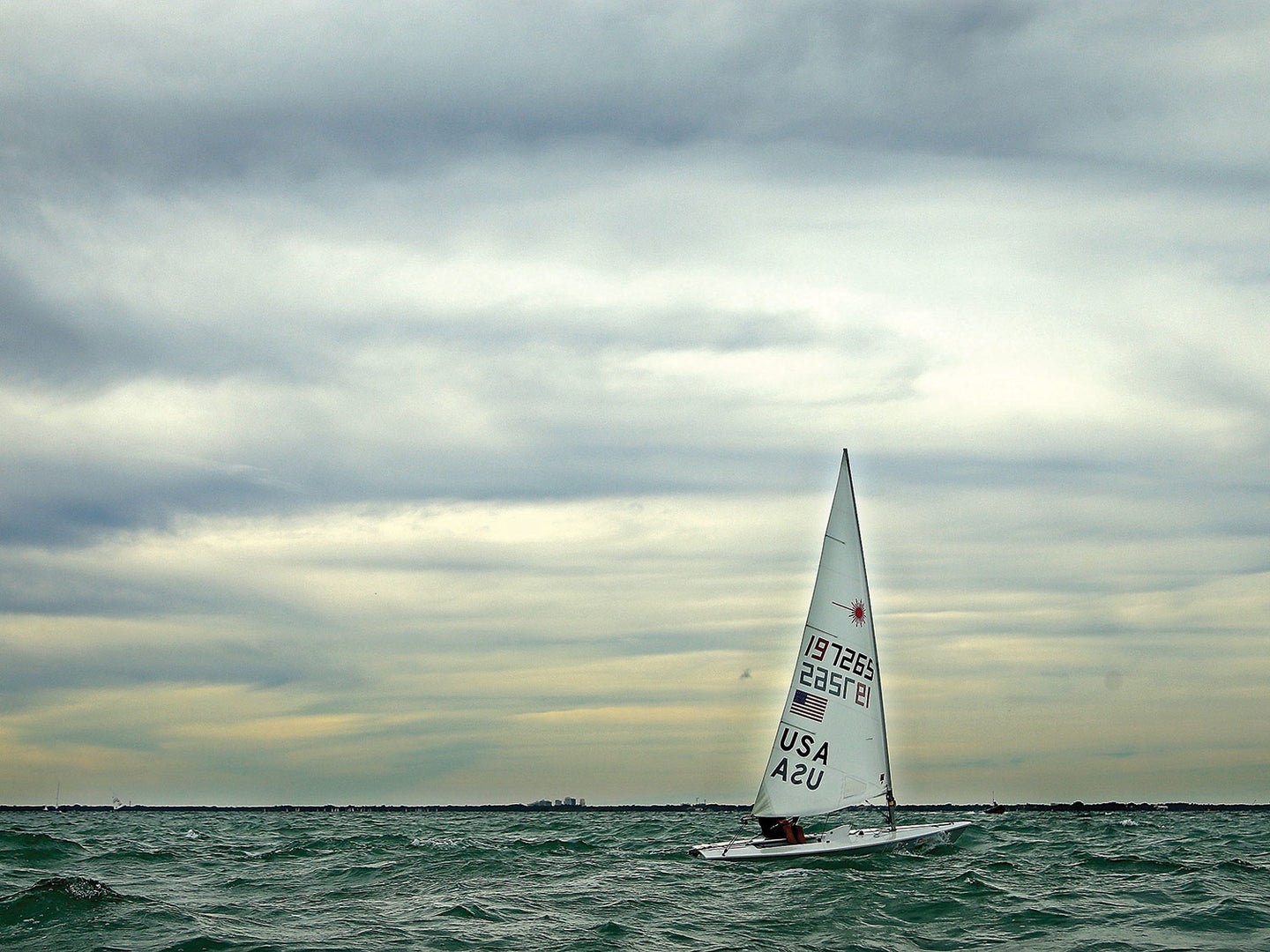
On a slate-gray day in September, 89-year-old Bruce Kirby leans against the pinstriped first-mate’s seat of Lulu as it motors in slow circles on Long Island Sound. Just outside the elegantly varnished cockpit, a fleet of small sailboats races by, its formation loose and shifting. Kirby follows the boats through a pair of binoculars. One, Jack , belongs to him; he’d be out there competing if it weren’t for his ailing back. But all of the boats are Kirby’s design.
Known as Sonars, Kirby drew their shape in 1979 with a day just like this in mind. The Noroton Yacht Club , Kirby’s home port in the suburban town of Darien, Connecticut, wanted a craft for its members to race—something nimble and fast, but also sturdy and well-behaved. The Sonar is a “one-design boat,” meaning its specifications and equipment are governed by strict rules to ensure that competing in one is a test of skill, not money. Sailing remains a sport of the wealthy, and left unchecked, they can take things to extremes. The superyachts of the America’s Cup have nine-figure R&D budgets, and crews who wear crash helmets and body armor to protect themselves at new limits of speed and performance. In contrast, a used Sonar can be had for under $10,000, and is stable enough that it’s been used by Paralympians since the 2000 games. Out on the sound that afternoon, 37 boats are vying for the Sonar North American Championship, with a few former Olympians among the skippers. The whole event is buoyed by Kirby’s presence.
Kirby is a world-class sailor and Olympian himself—he represented Canada in ’56, ’64, and ’68—but he is most famous as the designer of a slew of boats known for their swiftness, and also their clarity and simplicity. The epitome of his ethos was a blockbuster, one that defined his career and the course of sailing more broadly: the single-person racing dinghy known as the Laser.
Back on land, Kirby looks on as the competitors come off the water, windblown and skipping toward the toilets. A collision left one Sonar with a dinner-plate-size hole in its stern, and Kirby leans in for a closer look. The regatta’s press person asks him to do it again for the camera. During the awards ceremony, organizers call Kirby up to the stage for pictures with the winners, and the photographer makes everyone take off their shades, “except the rock star; he can leave his on.” The teasing is apt; among sailors, there are few bigger celebrities than Bruce Kirby. He comes by their affection honestly. His boats are a blast. “Who wants to design a slow boat?” Kirby likes to ask. “Or own one, for that matter.”
The wheel was a Neolithic invention. It appeared on the scene 5,000 or so years ago, part of a suite of advancements in agriculture. Sailboats came earlier. Australia was settled at least 50,000 years ago, and the first humans didn’t arrive on the continent by foot. Three thousand years ago, Odysseus himself was “sailing the winedark sea for ports of call on alien shores.” Christopher Columbus crossed the Atlantic, by sail, in 1492—marking the start of several hundred eventful years of wind-powered global travel. Only in the past 200 years have the steamship, internal-combustion engine, and jetliner erased the sailing ship’s primacy as a means of transportation. Sailboats themselves, however, have held on, not as necessity but as sport.

No surprise then that in 1969, when Bruce Kirby got a call from his friend, the Montreal-based industrial designer Ian Bruce, about drafting a new sailboat, the brief was for a piece of recreational equipment—a “car-topper” to go along with a line of outdoor gear (tents, cots, camping chairs) for the Hudson’s Bay Company retail chain. “I didn’t even know what a car-topper was,” Kirby recalls. The craft had to be easy to transport and rig in order to make it as painless as possible to get out on the water.
The dinghy wasn’t the first boat Kirby had dreamed up, but he wasn’t designing them full time. He was working as an editor at a sailing magazine, living (like now) on the Connecticut shore. As a designer, he was self-taught, nicking a copy of Skene’s Elements of Yacht Design , originally published in 1904, from a family friend and understanding, he estimates, about a third of it. But Kirby had “three-dimensional eyeballs,” as he describes it; he had no trouble envisioning the shape of a hull. And as a world-class racer of small boats, he knew what a fast one should feel like.
Kirby sketched on ruled paper as they talked. When they hung up, he brought it to his 7-foot drawing board and began to tinker. He knew he had to “get the numbers right.” His first consideration was what’s known as the prismatic coefficient, which defines the shape of the vessel. Is it a tub or a knife? Or, in the language of yacht design, is the hull “full” or “fine”? A rectangular barge has a prismatic coefficient of 1 because its hull entirely fills the prism made by its length, beam (or width), and draft (its depth). Most sailboats have a coefficient between 0.5 and 0.6, meaning about half that volume. If the prismatic coefficient is too high—if the boat is too fat—it will be slow, especially in light wind. But if the coefficient is too low—if the boat is too skinny—it will slice through the waves rather than ride up on top of them, or “plane.” A sailboat that planes well is fast, but more important, it’s fun. High up out of the water, wind and sail become more than the sum of their parts. Kirby settled on 0.55, a just-right number to make a well-balanced boat: fast but stable, neither too tippy nor too tubby.
But only if the sailor worked for it. Dinghies depend on “live ballast,” i.e., a person leaning, or “hiking,” out over the side. A big sail makes a boat zip, if its sailor can keep it flat. Basic physics says that their ability to do so depends on their weight, which of course varies from person to person. So, Kirby had a second number to choose: the ratio of sail size to the hull’s displacement, which depends on the weight of the boat plus its human. Kirby dialed in his dinghy to perform best with 180 pounds of flesh—in his words, “a good-size guy working like hell to go fast.” The decision was in part selfish; it described Kirby at the time.
Within a couple of weeks, Kirby had a sketch for Bruce. “He was in a bit of a hurry,” Kirby says. When Hudson’s Bay decided against selling a boat at all, Kirby told Bruce to hold on to the design: “I put a little more oomph in the boat than you asked for. It’s going to be a pretty hot little boat if we ever have a chance to build it.”
The chance came soon enough. In October 1970, Kirby’s magazine planned a promotional regatta for sailboats that cost less than $1,000, to be held at the Playboy Club in Lake Geneva, Wisconsin. Kirby and Bruce built a prototype of the car-topper and rigged it for the first time the day of the race. They came in second place. The bend of the mast didn’t match the shape of the sail, so they recut the cloth that night and won the next day’s contest. The little boat was fast and looked it, with a low profile that kept sailors close to the water. Spectators tried to buy it right off the beach.

Racing the wind
Back home, the friends began work on a second prototype, mailing plans back and forth across the border. They built it with an adjustable mast so they could play with different configurations. By December, it was ready for final testing. Doing laps on Lake Saint-Louis near Montreal, they moved the mast forward a few inches, cut its height, and took a foot off the end of the boom, looking for just the right feel. By the end of the cold weekend, they decided their hot little dinghy—13 feet, 10½ inches long—was ready for market. All it needed was a name. At a celebratory dinner, a sailing friend—a McGill University student—suggested it should be something youthful and international. “Why don’t you call it something like ‘Laser’?” he asked.
Ian Bruce had a small boatbuilding shop, and the men decided that he would manufacture the dinghy, while Kirby would receive royalties for the design. Bruce priced it at $695. At the New York Boat Show the next month, they collected orders for 144 Lasers. “We didn’t know what the hell was happening,” Kirby recalls.
There were societal factors at play. Postwar prosperity and the construction of new highways led to a boom in second-home ownership in the 1960s and ’70s. Many of those new residences were along lakes and reservoirs, and there were more of those too: Between 1933 and 1968, the Tennessee Valley Authority created more than 10,000 miles of new shoreline, while the Bureau of Land Management created 200 reservoirs. A new swath of the middle class could afford a lake house and, apparently, were ready for an inexpensive sailboat to go with it.
As intended, the Laser was cheap and easy to transport, rig, and bang into a dock. “From a technology standpoint, it’s a very simple boat, and just a great, great boat to learn how to sail fast,” says Scott MacLeod, a sailor at the Noroton Yacht Club who twice won the North American collegiate Singlehanded Championship in a Laser—1983 and 1985—and topped out at seventh place in the Worlds.
Laser sailors first organized themselves into an international class in 1974, codifying Kirby’s design into strictly defined specs, and setting the craft on a path toward the Olympics, where it debuted in Atlanta in 1996. In the ’80s, the introduction of a smaller sail, known as the Radial, allowed lighter sailors to be competitive in heavy winds, and became the standard for women’s Laser racing. The sport of sailing is said to be in perpetual decline, but Laser racing has persisted. The 2018 Laser Masters World Championships, held in Dún Laoghaire, Ireland, had 302 entries from 25 countries. (The apogee was the 1980 Laser Worlds, in Kingston, Ontario, a legendary event with 350 entries.) But there are also thousands of smaller weekend regattas, held everywhere from Sheepshead Bay in Brooklyn, New York, to the Victoria Nyanza Sailing Club in Kampala, Uganda.

All told, more than 220,000 Lasers have been built by licensed manufacturers on five continents. (Ian Bruce sold his boatbuilding business in the 1980s. He died in 2016.) With the exception of alternative rigs with smaller sails, like the Radial, the Laser has hardly changed. There have been slight upgrades, each one documented and approved in a “construction manual” maintained by the International Laser Class Association, a kind of worldwide club of Laser sailors. Each Laser factory is audited for conformity.
“Because it’s such a one-design boat, it really comes down to the sailor,” says Sarah Douglas, a contender for the Canadian 2020 Olympic sailing team who recently came in sixth at the Laser Worlds. “It’s not equipment differences or sail differences; it comes down to what the sailor is able to do out on the water,” she says. “At the end of the day, you can’t blame your boat. It’s just you. It is all you.”
For decades, Kirby and his wife, Margo, lived in a house on Connecticut’s little Five Mile River, just upstream from where it empties into Long Island Sound. It had a deepwater dock out the back, and Kirby’s Laser—sail number 0—was laid out on the lawn. (It’s now at the Mystic Seaport Museum .) But recently they moved a few blocks away, to a more modest Colonial with a two-car garage. There are still moving boxes to unpack, yet the walls are already hung with old photos of Kirby sailing his designs, and boat models known as half hulls mounted on plaques. The Laser gets pride of place. Next to the front door, there’s a framed action shot of the “hot little boat” at its best: in the sail position known as a reach, with spray skirting off the bow as if it had a jet engine underneath.
The Laser’s simplicity makes it something like the platonic ideal of a sailboat, like a child’s drawing with a line and a triangle—but enabled by the postwar innovations of fiberglass (for its hull), aluminum (for its mast), and Dacron (for its sail). It is the sort of definitive and lasting design that comes around only rarely, such as the iPhone or five-pocket bluejeans. Except bluejeans and iPhones are constantly being tweaked, evolving along with human taste or ingenuity. Each change widens the aperture of possibility. The object does a new thing, looks a new way, or serves a new purpose.
But a Laser is a sailboat. It moves by the power of the wind along the surface of the water, a function that hasn’t changed in millennia. Granted, Lasers rarely go anywhere, except in circles. They satisfy a basic human desire for speed and competition, each high on the hierarchy of pleasures. It’s all the more remarkable, then, that among innumerable variations of small sailboats over all time, the precise design of the Laser has ridden up on the wave of history, and stayed there, for 50 years—and counting.
This article was originally published in the Spring 2019 Transportation issue of Popular Science.
Like science, tech, and DIY projects?
Sign up to receive Popular Science's emails and get the highlights.

For Sailors, By Sailors
The latest events, creating a sustainable association, introducing the laser class.
Welcome to The Laser Class, established by concerned sailors with a desire to celebrate the iconic One-Design Laser boat and to reconstitute the original Laser Class as a world-class organization that represents and serves its community.
Join us today! Membership of the Association is free until 2022. You will also get a Members Card giving you access to exclusive discounts from our partners.
Sounds good? Join now!
- Latest News

With regattas and fleets all throughout the country, this boat is the ideal fun day-sailer that you never outgrow. From learning the basics to doing an Olympic campaign, the boat has it all.
With an un-stayed cat rig and light, 130 lb hull, the laser is very easy to rig and transport. The laser also has rig options for smaller sailors. They are the Laser Radial and the Laser 4.7
loa 13’10” beam 4’7” sail area 75 ft² , Radial: 62 ft², 4.7: 50.5 ft² spinnaker area n/a hull weight 130 lbs. crew 1 # of boats built 190,000 active US fleets New England, FL, CA, MA, CT, RI, VA, NY
For more information please visit this class associations website: http://www.laserinternational.org/
Reader Interactions
Leave a reply cancel reply.
Your email address will not be published. Required fields are marked *
By submitting this form, you accept the Mollom privacy policy .

One Design Classes
Browse the airwaves.
- Sailing News Articles
- High School & College News Articles
- One-Design Class Profiles
- Tactics & Strategy
- Sailing & Education
- ICSA Rankings
- Sailing/Yacht Club Profiles
- Youth Sailor of the Year
- Sail1Design Annual Awards
Helpful Links
- Join the S1D Team
- Accessibility Help
- Privacy Policy
- Entries feed
- Comments feed
- WordPress.org
Free Shipping Over $99* - 366 Day Returns - Dedicated Customer Support

- Call Us +1-503-285-5536
- Sign in & Register
- Recently Viewed
Laser Sailing

Proudly Supporting Laser Sailors Since 2005
West Coast Sailing is North America's #1 source for Laser sailors, offering parts, apparel, and support for since 2005. Laser sailing has been a core part of our business since day one, and we've had the honor of working with sailors around the world. Our connections to the community include annual support of the North American class association, Columbia Gorge Racing Association (local racing venue in the Gorge), west coast districts including District 22, District 24, and District 25, and numerous events around the country. We actively stock new ILCA sailboats from Ovington, offer charters at regional events, and have an industry leading selection of one design parts, new sails, spars, upgrades, covers, dollies, and all of the latest apparel from top brands. Whether you're an Olympic hopeful, active weekend warrior, or recreational sailor, you can trust our team to help you get out on the water and discover why thousands of sailors around the world choose to sail in this great class.
Why West Coast Sailing?
Actively supporting Laser sailors since 2005 - 15+ years! Industry leading selection of the best boats, parts, sails, and accessories with thousands of items in stock. Dedicated team of dinghy sailors to answer your questions. Sponsoring the class association, district series, and events around the country. Fast, free shipping on most orders.
Your Source for Laser Parts & Accessories
LASER SAILS + FREE #s/INSTALL
Laser custom rigging, laser spars, parts, & accessories, rigging guides & advice, laser youtube videos, rigging & setup reference photos.
Laser District & Regatta Support
DISTRICT 24 GRAND PRIX - Northern California
District 24 is one of most active ILCA/Laser districts in North America and includes sailors from California north San Luis Obispo to Oregon and all of Nevada (except Las Vegas). The District 24 Laser Grand Prix is an annual series of regattas hosted by various sailing clubs. West Coast Sailing is a multi year sponsor of the series through 2022.
Grand Prix Event Page - Click Here
DISTRICT 22 GRAND PRIX - Pacific Northwest
West Coast Sailing is proud to be the primary sponsor of the new ILCA-NA District 22 Grand Prix, a series of ILCA events in the Pacific Northwest. Thanks to the Columbia Gorge Racing Association for assisting in organizing this series!
Notice of Race and Results - Click Here
DISTRICT 25 SUPPORTING SPONSOR - Southern California
In addition to support for District 22 and District 24, West Coast Sailing is a key supporter of sailors in District 25 in Southern California.
ILCA/Laser Sailing Resources
Laser vs ILCA Explained How to Update and Restore an Old Laser Guide to ILCA/Laser Rig Sizes ILCA Rigging Videos on YouTube
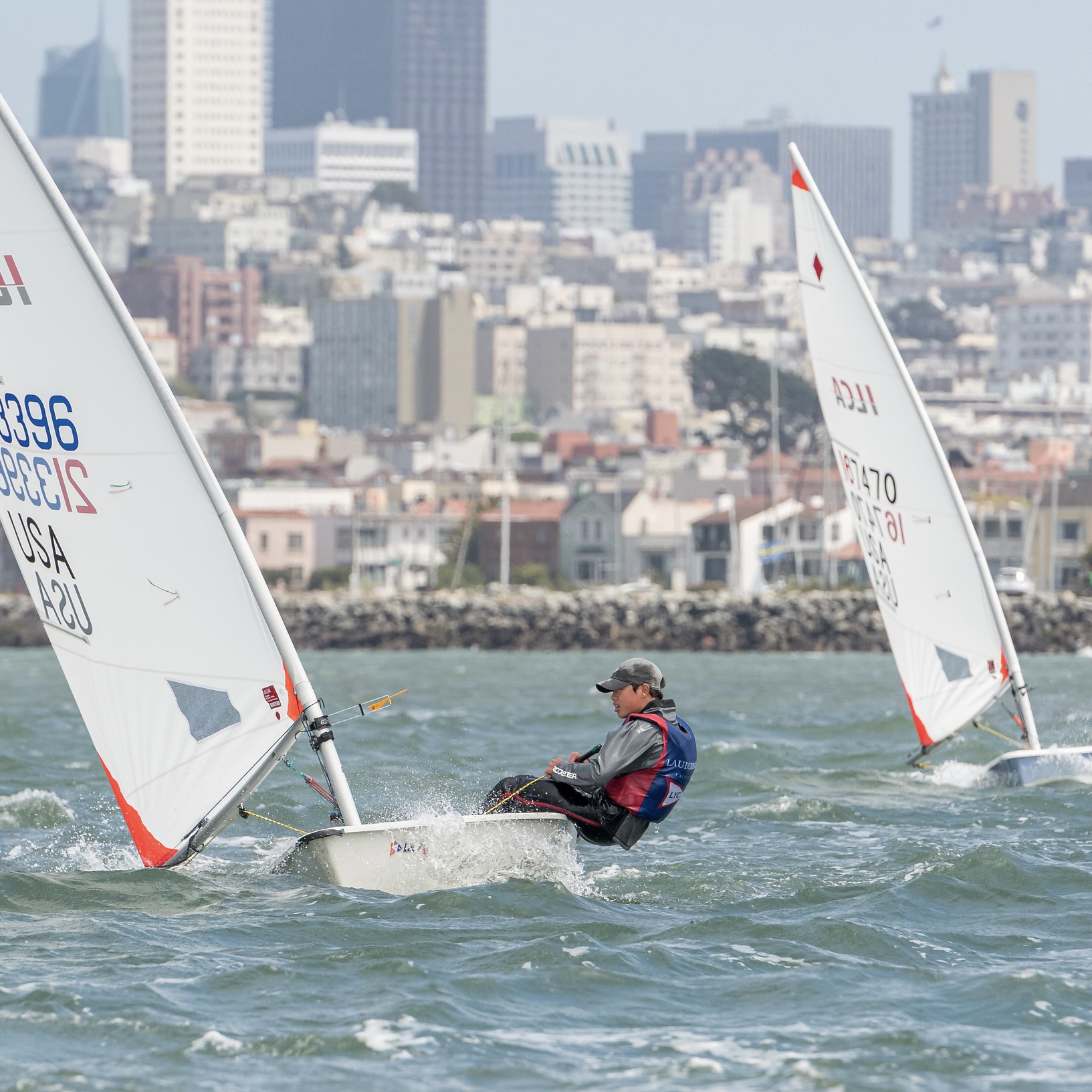
PARTS DIAGRAM
Rigging manual.
ILCA / Laser Line Guide & Rigging Upgrades
Blog Post: A Guide to Restoring an Old Laser
Guide: Rivets for ILCA / Laser Spars
Guide: ILCA / Laser Rig & Sail Sizes
Subscribe To Our Newsletter
Sign up for our newsletter to receive exclusive discounts, new product announcements, and upcoming sales.

The CASCAIS is the ultimate rotomolded multi–purpose sailing dinghy. Its versatility and innovative design provide for exceptional handling, speed and stability. The spacious cockpit and 3 rig / sail versions make the Cascais the ideal platform for all levels of sailors. Whether you are a recreational sailor or enjoy the thrill of racing, the Cascais cannot be beat for what it has to offer.

- Beautiful design that is simultaneously practical and responsive
- Maximum flexibility – the 3 versions of Cascais provide the ideal pathway boat and can be sailed both single or double handed
- Exciting Performance –regardless of what level of sailor you are, Cascais promises a sailing experience that is never boring, more often exhilarating sailing as complete and fun as it can be
- Delivers a complete experience – depending on what adventures you seek, there is a perfect combination for your sailing needs
- All-around safety – 3 layered plastic body, wide hull for stability, high boom to avoid accidents, the list goes on

- Low maintenance – plastic hull is easier to maintain reducing running cost over its lifetime
- Durable – state of the art 3 layered Polyethylene hull
- High end materials and processes – allow for thickness variation in high and low load areas, increasing the longevity of the boat while decreasing the weight
- User friendly – hardware designed for simplicity and short time to water so that you can spend more time enjoying your Cascais on the water

- Spacious cockpit – more comfort, especially for beginners
- Flexibility and pathway – 2 Rigs, 3 sail plans makes this the true all-around dinghy
- CE certified to up to 300kg – allows a teacher and a student to sail together
- Easy rigging – reducing time to water and makes it easy for young sailors to rig independently
- Transportable – it is cartoppable making it easy to travel with
CASCAIS FUN
60 ft 2 5.58 m 2
18.39 ft 2 1.69 m 2
76.53 ft 2 7.11 m 2
12.17 FT 3.70 M
5.14 FT 1.56 M
2.76 FT 0.84 M
154.30 LB 70 KG
HPDE (Polyethylene high density)
BOAT LIGHTNESS
TIME TO WATER
SKILL LEVEL

PERFECT CHOICE FOR LEISURE SAILING AND THOSE LEARNING TO SAIL
Gennaker Colors:

ALUMINUM SPARS
Fun version comes with dacron sail for recreational sailors and ideal as a training boat.
Perfect choice for leisure sailing and those learning to sail.
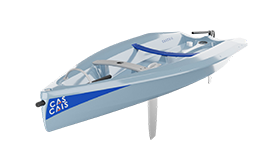
Made to Order
(Available soon)
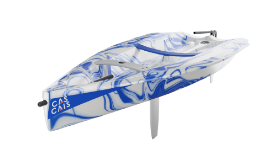
64.15 ft 2 5.96 m 2
19.05 ft 2 1.77 m 2
93.54 ft 2 8.69 m 2
SUITABLE FOR THE WHOLE FAMILY
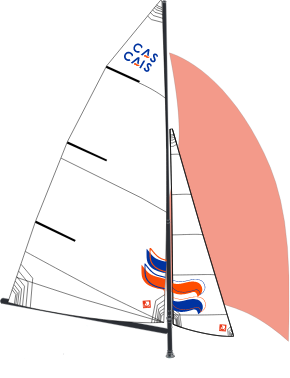
For the family that wants both leisure sailing and racing in one boat.
CASCAIS RACE
60 ft 2 5.58m 2
76.53 FT 2 7.11 m 2
WHEN YOU STRIVE TO PUSH THE LIMIT
Gennaker Colours:

When you strive to push to the limit
- Upgraded downhaul
PARTS LOCATOR
RIGGING MANUAL
- Parts & Accessories
Privacy Overview

Bill Tripp started Tripp Design Naval Architecture in 1984, designing racing boats that reflected a childhood spent on the water sailing in boats his father, William Tripp, Jr., designed. Thirty-three years later, with offices in Connecticut and Amsterdam, Tripp and his team design and engineer state- of-the-art yachts ranging in size from 43’ to 80+ meters. Recently launched is the 65’ cruiser/racer ChessieRacing, 46m globetrotting Skade, and Tripp’s largest project to date the 85m sailing ketch Aquijo with two 91m rigs and 5.000m2 of sail area. Bill’s sport of choice is scrappy, small boat team racing—he likens it to 3D chess mixed with a snowball fight. Bill is an avid sailor whatever the size and endeavors to advance the sport in all its forms; design is a good tool for this. What he enjoys most of all is close collaboration with his clients, his office colleagues, and the build teams throughout the entire creative process to realize someone’s vision or dream. A dynamic exchange of ideas with talented and successful people is a dream in and of itself.

Show your commitment to the environment by sailing the CASCAIS Bio Fun, Race and XD.
Supporting the Environment and a Sustainable Future
Introducing the CASCAIS Bio hull , a truly revolutionary option for dinghy sailboats. In everything we do, we are committed to find solutions that decrease negative impacts on the environment.

Rotomolded boats have a longer lifespan and the plastic can be recycled.
The CASCAIS Bio is an additional step in that direction. It is different from our standard hull because it uses a biopolymer layer that is easier to decompose than traditional hulls made of Polyethylene.

That is because 50% of the hull skin is made of sugar cane.
Developed in partnership with experts, biopolymer materials are durable and environmentally friendly.

During the growth of sugar cane it absorbs CO2 reducing the carbon levels in the atmosphere resulting in a “negative” carbon footprint. The CASCAIS Bio hull com in Fun, Race and XD configuration. You can also choose from available hull colors.

ILCA Dinghy

Class-Legal ILCA Dinghy, Club Package, Devoti

Performance Sailcraft Australia
Class-Legal ILCA Dinghy, Club Package, PSA

Class-Legal ILCA Dinghy, Carbon/ Race XD, Devoti
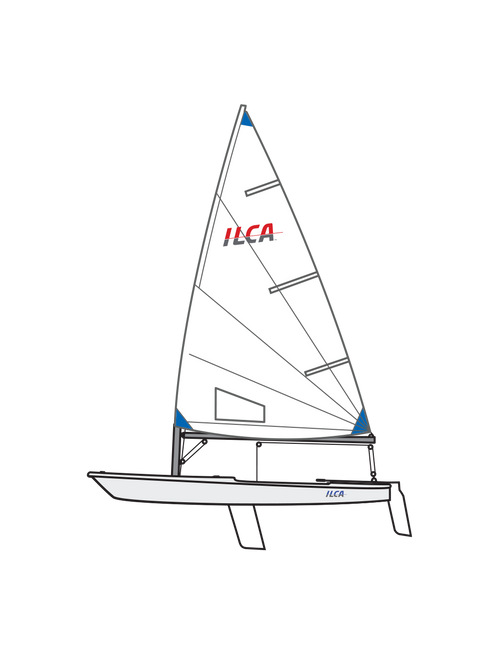
Class-Legal ILCA Dinghy, Carbon/ Race XD, PSA
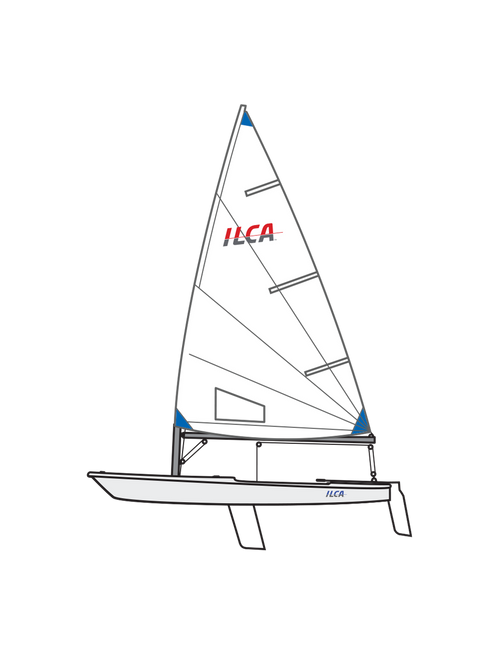
Class-Legal ILCA Dinghy, Olympic Package, Devoti

Ex-Charter ILCA Dinghy, Devoti

ILCA Dinghy, Hull Only, Devoti
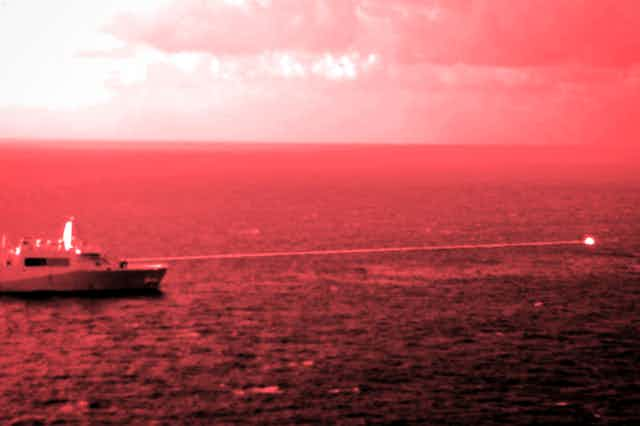

High-energy laser weapons: A defense expert explains how they work and what they are used for
Director, Center for National Security Initiatives, and Professor of Aerospace Engineering Sciences, University of Colorado Boulder
Disclosure statement
Iain Boyd receives funding from the U.S. Department of Defense and Lockheed-Martin Corporation.
University of Colorado provides funding as a member of The Conversation US.
View all partners
Nations around the world are rapidly developing high-energy laser weapons for military missions on land and sea, and in the air and space. Visions of swarms of small, inexpensive drones filling the skies or skimming across the waves are motivating militaries to develop and deploy laser weapons as an alternative to costly and potentially overwhelmed missile-based defenses.
Laser weapons have been a staple of science fiction since long before lasers were even invented. More recently, they have also featured prominently in some conspiracy theories. Both types of fiction highlight the need to understand how laser weapons actually work and what they are used for.
How lasers work
A laser uses electricity to generate photons, or light particles. The photons pass through a gain medium, a material that creates a cascade of additional photons, which rapidly increases the number of photons. All these photons are then focused into a narrow beam by a beam director.

In the decades since the first laser was unveiled in 1960 , engineers have developed a variety of lasers that generate photons at different wavelengths in the electromagnetic spectrum, from infrared to ultraviolet. The high-energy laser systems that are finding military applications are based on solid-state lasers that use special crystals to convert the input electrical energy into photons. A key aspect of high-power solid-state lasers is that the photons are created in the infrared portion of the electromagnetic spectrum and so cannot be seen by the human eye.
When it interacts with a surface, a laser beam generates different effects based on its photon wavelength, the power in the beam and the material of the surface. Low-power lasers that generate photons in the visible part of the spectrum are useful as light sources for pointers and light shows at public events. These beams are of such low power that they simply reflect off a surface without damaging it.
Higher-power laser systems are used to cut through biological tissue in medical procedures. The highest-power lasers can heat, vaporize, melt and burn through many different materials and are used in industrial processes for welding and cutting.
In addition to the power level of the laser, the ability to deliver these various effects is determined by the distance between the laser and its target.
Laser weapons
Based in part on the progress made in high-power industrial lasers, militaries are finding an increasing number of uses for high-energy lasers. One key advantage for high-energy laser weapons is that they provide an “infinite magazine.” Unlike traditional weapons such as guns and cannons that have a finite amount of ammunition, a high-energy laser can keep firing as long as it has electrical power.
The U.S. Army is deploying a truck-based high-energy laser to shoot down a range of targets, including drones, helicopters, mortar shells and rockets. The 50-kilowatt laser is mounted on the Stryker infantry fighting vehicle, and the Army deployed four of the systems for battlefield testing in the Middle East in February 2024.
The U.S. Navy has deployed a ship-based high-energy laser to defend against small and fast-moving ocean surface vessels as well as missiles and drones. The Navy installed a 60-kilowatt laser weapon on the destroyer the USS Preble in August 2022.
The Air Force is developing high-energy lasers on aircraft for defensive and offensive missions. In 2010, the Air Force tested a megawatt laser mounted on a modified Boeing 747 , hitting a ballistic missile as it was being launched. The Air Force is currently working on a smaller weapon system for fighter aircraft .
Russia appears to be developing a ground-based high-energy laser to “blind” their adversaries’ satellites.
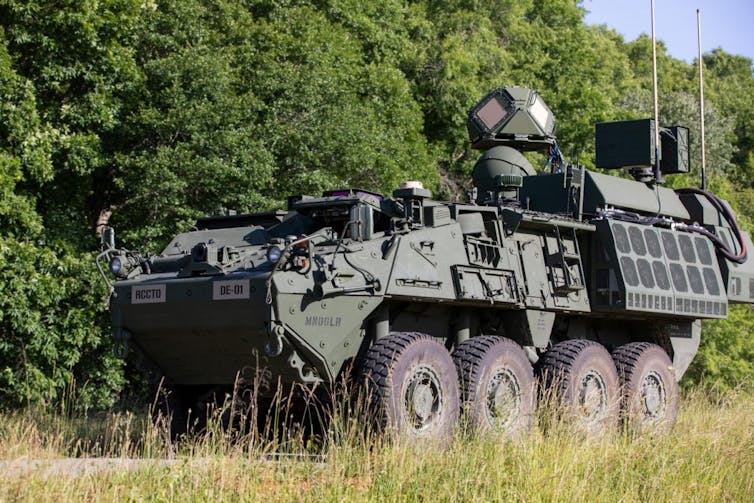
Limitations of laser weapons
One key challenge for militaries using high-energy lasers is the high levels of power needed to create useful effects from afar. Unlike an industrial laser that may be just a few inches from its target, military operations involve significantly larger distances. To defend against an incoming threat, such as a mortar shell or a small boat, laser weapons need to engage their targets before they can inflict any damage.
However, to burn through materials at safe distances requires tens to hundreds of kilowatts of power in the laser beam. The smallest prototype laser weapon draws 10 kilowatts of power , roughly equivalent to an electric car. The latest high-power laser weapon under development draws 300 kilowatts of power , enough to power 30 households. And because high-energy lasers are only 50% efficient at best, they generate a tremendous amount of waste heat that has to be managed.
This means high-energy lasers require extensive power generation and cooling infrastructure that places limits on the types of effects that can be generated from different military platforms. Army trucks and Air Force fighter jets have the least amount of space for high-energy laser weapons, and so these systems are limited to targets that require relatively low power, such as downing drones or disabling missiles. Ships and larger aircraft can accommodate larger high-energy lasers with the potential to burn holes in boats and ground vehicles. Permanent ground-based systems have the least constraints and therefore the highest power, making it potentially feasible to dazzle a distant satellite.
Another important limitation for platform-based high-energy laser weapons relates to the infinite magazine concept. Since the truck, ship or airplane must carry the power source for the laser, and that will limit the power source’s capacity, the lasers can only be used for a limited amount of time before they need to recharge their batteries.
There are also fundamental limits to high-energy laser weapons, including diminished effectiveness in rain, fog and smoke, which scatter laser beams. The laser beams also need to remain locked onto their targets for several seconds in order to inflict damage. Current prototype laser weapons are also proving a challenge to maintain in combat zones .
No fire from the skies
A new type of conspiracy theory has emerged in recent years claiming that nefarious entities have used airborne high-energy lasers to start wildfires in California , Hawaii and Texas . This is highly unlikely for several reasons.
First, the power level needed to ignite vegetation with a high-energy laser from the sky would require a large power source installed on a large aircraft. A plane that size would have been highly visible right before any fires were ignited. Second, in some images that claim to show the fires being started, the laser beams are green. Beams from high-energy lasers are invisible.
What comes next
In the future, high-energy laser weapons are likely to continue to evolve with increased power levels that will expand the range of targets they can be used against.
Emerging threats posed by low-cost, weaponized drones like those in use in conflicts in the Middle East and Ukraine make it more likely that high-energy lasers will also find nonmilitary applications such as defending the public against terrorist attacks.
- Military technology
- Air defences
- Directed energy weapons

Visiting Professor - 2024-25 Australia-Korea Chair in Australian Studies at Seoul National University

Senior Research Ethics Officer (Human Ethics Pre-review)

Dean, School of Computer, Data and Mathematical Sciences

School of Social Sciences – Academic appointment opportunities

Union Organiser (part-time 0.8)
THE 10 BEST Moscow Boat Rides & Cruises
Boat rides & cruises in moscow.
- Boat Rentals
- Scuba & Snorkeling
- Fishing Charters & Tours
- Water Sports
- Stand-Up Paddleboarding
- Surfing, Windsurfing & Kitesurfing
- Kayaking & Canoeing
- Waterskiing & Jetskiing
- Parasailing & Paragliding
- River Rafting & Tubing
- Dolphin & Whale Watching
- Speed Boats Tours
- Submarine Tours
- 5.0 of 5 bubbles
- 4.0 of 5 bubbles & up
- 3.0 of 5 bubbles & up
- 2.0 of 5 bubbles & up
- 3rd Transport Ring (TTK)
- District Central (TsAO)
- Garden Ring
- District Northern (SAO)
- Good for Big Groups
- Good for Couples
- Good for a Rainy Day
- Budget-friendly
- Good for Kids
- Hidden Gems
- Honeymoon spot
- Good for Adrenaline Seekers
- Adventurous
- Things to do ranked using Tripadvisor data including reviews, ratings, photos, and popularity.
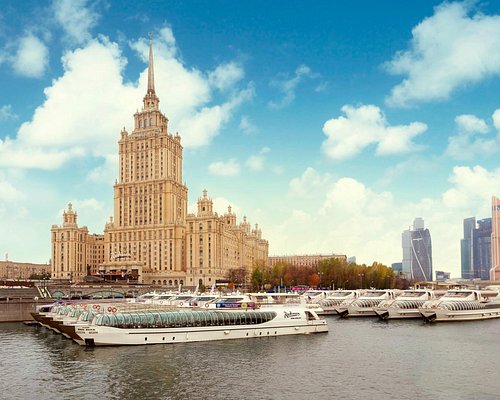
1. Flotilla Radisson Royal

2. Moscow River Boat Tours

3. Sup-Club

4. Akvanavt Diving Centre

5. Diving Center Crocus City Oceanarium

6. CheapRussia Tours
7. Kite School Kiteclass

8. SUP Center
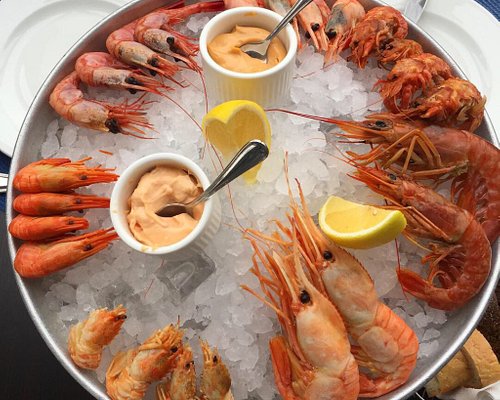
9. Erwin. Reka
10. Easy Russia Tour Guide
11. Lovely Russia Tours

13. Capital River Boat Tours - Moscow Centre

14. Alfa Centr
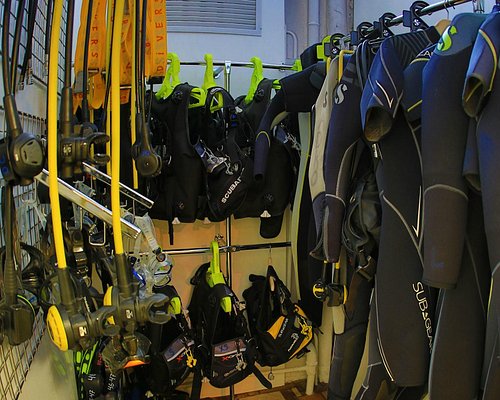
15. Diving Club Divers
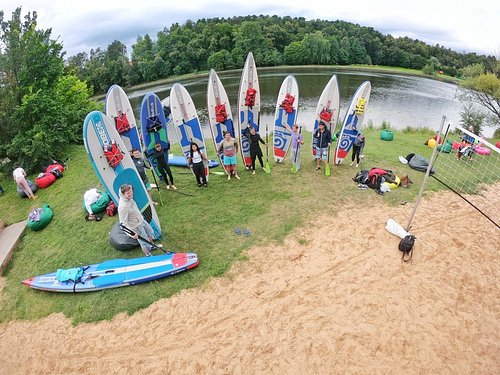
16. Sup Outdoor

17. MORE MOSCOW
19. Soho Sailing Style

20. Diving Center Crocodile

21. Dive-Project

22. Mosparokhodstvo
24. Kosinskiy Children Marine Club

25. Kayak Moscow
26. DIVECLUB CHE
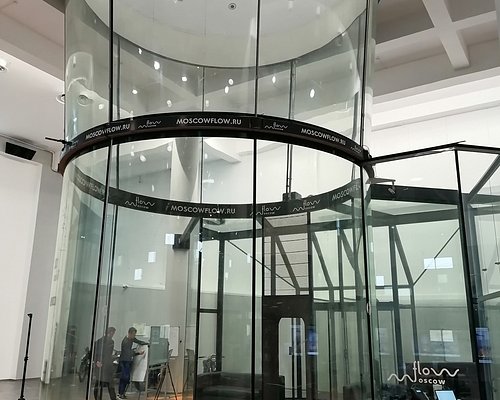
27. FLOW Moscow

28. Moswake

29. Morskiye Volki

30. S-cruises
What travelers are saying

- CheapRussia Tours
- Easy Russia Tour Guide
- Lovely Russia Tours
- MORE MOSCOW
- Insider Moscow Tours
- Flotilla Radisson Royal
- Moscow River Boat Tours
- Capital River Boat Tours - Moscow Centre
- Diving Center Crocus City Oceanarium
International Laser Class Association
One Boat, One Sailor, One Design.

About the Boat
The world’s most popular adult and youth racing class.
Originally known as the Laser, the ILCA dinghy is a single-handed racing dinghy. The biggest attraction of the ILCA dinghy is that it is protected by strict one-design class rules, which means that no changes are allowed to the boat unless they are specifically permitted in the rules. The result is that all ILCA boats are virtually identical, whether they are brand-new or 10 years old, making it the sailor that wins the race – not the boat. The ILCA dinghy is a challenging boat that rewards athleticism, subtle steering, and trimming techniques, as well as tactical excellence. It is a single-handed Olympic-class boat for both men and women and is sailed at club, national, and international levels. With over 225,000 boats in 140 countries, it is the world’s most popular adult and youth racing sailboat.
No fuss, just sailing.
One of the reasons the ILCA dinghy is so popular is the boat’s sheer simplicity. The two-part free-standing mast and sleeved sail make the boat easy to rig, and its lightweight hull makes it easy to carry and cartop.
A boat for life.
The ILCA formula combines one hull with three different rigs: ILCA 4, ILCA 6, and ILCA 7. Young sailors starting out in the ILCA 4 can move up in rig sizes as they grow physically and develop tactically without the need to buy a complete new boat every few years. The one-design protection also means that your boat will never be outdated, which explains why ILCA dinghies have such high resale values.
Finally, a strong class association that actively promotes and drives forward sailing around the globe makes mass production of the ILCA dinghy viable, keeping the cost of the boats and spares relatively low.
The ILCA Formula
A choice of rigs for different size sailors means three boats in one. See Equipment for more detailed boat diagrams.
- Are your children reaching the age when they want to go sailing in an ILCA by themselves?
- Does your husband or wife fancy the occasional sail in your ILCA?
- When you drive two hours to get to the water, have you found it is too windy for you to go sailing?
- Are you too light to sail with the ILCA 7 rig?
The ILCA formula is the answer to all these questions. By changing only the sail and lower mast, an ILCA dinghy can be sailed comfortably in a great variety of wind conditions and provide exciting but controlled sailing even for sailors weighing as little as 35 kg. The ILCA formula is a three-rig option that has been adopted by a number of sailing schools as a simple and economical way for sailors of different sizes and abilities to sail in a wide range of winds and reduce the amount of “down time.”
The ILCA 4 uses a short pre-bent lower mast to maintain a balanced helm and a sail area that is 35% smaller than the ILCA 7. It is ideal for the lighter-weight sailor graduating from Optimist.
The ILCA 6 is the next step up in size. It uses a more flexible and slightly shorter lower mast together with a sail area 18% smaller than the ILCA 7. The ILCA 6 has a large following with national and international regattas and World Championships for men, women, and youth, attracting as many countries and competitors as the ILCA 7. Many countries support a full ILCA 6 youth program. In addition to having a strong following among lighter-weight sailors, the ILCA 6 is the women’s single-handed dinghy at the Olympic Games.
The ILCA 7 can be sailed by any weight in light winds, but as the wind increases, it is better suited to higher sailor weights. The ILCA 7 is a single-handed dinghy for men at the Olympic Games.
Apart from the strong second-hand market for the ILCA 7, there is an even stronger second-hand market for ILCA 6 and ILCA 4 lower mast and sails as a separate package from the hull.
Why sail the ILCA dinghy?
One of the greatest things about the ILCA dinghy is that it offers a huge amount of fun and family pleasure to all ages, yet at the same time it satisfies the desire for excellence and a physical test at the highest level in the Olympic Games. The ILCA dinghy is something very special. With over 225,000 boats built, the attraction remains strong for new owners with new boats being built at a rate of over 2,000 per year.
Seeing youngsters, fresh out of youth classes, getting a thrill out of sailing an Olympic-class boat in full control with the ILCA 4 or ILCA 6 rig is as exciting as listening to the stories of 60-year-old Masters recounting their wild rides on Pacific rollers during the 1997 World Masters Championship in Chile.
The ILCA dinghy is challenging and it is rewarding, whether at the club level or the Olympic Games. When you take your 10-year-old boat out for a local race, the challenge is to work harder, hike longer, be smarter, and sail better than the other ILCA sailors. At the end of the race, you count the number of boats behind you, and you are rewarded with the knowledge that you beat them fair and square by your own skill and effort. Even if there are no boats behind you, the challenge is to go out next time, knowing that you have equal equipment and the potential to improve.
And there is a bonus! It is quick to rig, keeps you fit, and is inexpensive.
When you look in the center pages of the Handbook and count ILCAs sailing in 120 different countries all over the world, you see that ILCA has achieved the highest-ever country entry at the Olympic Games and see how many countries are entering ILCA World Championships. You perhaps realize just how great our little boat is and why it is so important to look after it with a strong class association.

IMAGES
VIDEO
COMMENTS
The Laser is the world's most popular adult racing class boat. True to box one design standards, each Laser in the world is identical ensuring the best sailor on the water wins the race, not the boat. The Laser is a challenging boat that rewards athleticism, subtle steering and trimming techniques, as well as the tactical excellence of the sailor.
Laser (dinghy) The Laser is a class of single-handed, one-design sailing dinghies using a common hull design with three interchangeable rigs of different sail areas, appropriate to a given combination of wind strength and crew weight. Ian Bruce and Bruce Kirby designed the Laser in 1970 with an emphasis on simplicity and performance.
The Laser is the world's most popular adult racing class boat. True to box one design standards, each Laser in the world is identical ensuring the best sailor on the water wins the race, not the boat. The Laser is a challenging boat that rewards athleticism, subtle steering and trimming techniques, as well as the tactical excellence of the ...
Thanks to the three rig sizes in the Laser class, the weight range in the Laser is quite large. Generally, the Laser Radial (ILCA 6) is suitable for sailors between 60kg and 75kg while the Laser Standard (ILCA 7) is suitable for sailors 75kg to over 90kg. The Laser 4.7 (ILCA 4) is designed specifically for younger and lighter sailors with an ...
Introduction to Laser Sailing. April 3, 2018 Katie Olsen How To. by Jon Emmett. The Laser is truly the boat for all ages from our Junior 4.7s to our legendary (over 75 year old) Masters. No other adult class is raced in more countries in the World, in a class which takes grass roots to Olympic sailors. Come and join us to see why!
The Laser Dinghy, a one-design racing sailboat, was designed by Bruce Kirby and unveiled to the public at the 1971 New York Boat Show. Since then 200,000+ Lasers have been built to date and are sailed across 140+ countries, with its popularity being primarily due to its simplicity and performance. The original concept for the Laser centered on ...
The Laser's simplicity makes it something like the platonic ideal of a sailboat, like a child's drawing with a line and a triangle—but enabled by the postwar innovations of fiberglass (for ...
Welcome to The Laser Class, established by concerned sailors with a desire to celebrate the iconic One-Design Laser boat and to reconstitute the original Laser Class as a world-class organization that represents and serves its community. Join us today! Membership of the Association is free until 2022.
Sep 23, 2021. The late Bruce Kirby. Photo courtesy of Pim van Hemmen. With 2021 drawing to a close, Laser sailors find themselves reflecting on both their class's 50th anniversary and the passing of the man who made it all possible: Canadian designer, sailor and sailing journalist, Bruce Kirby. Kirby, who died this past July at the age of 92 ...
Originally known as the Laser, the ILCA dinghy is a single-handed racing dinghy. The biggest attraction of the ILCA dinghy is that it is protected by strict one-design class rules, which means that no changes are allowed to the boat unless they are specifically permitted in the rules. The result is that all ILCA boats are virtually identical ...
Effortless design. The Laser was created to get sailors on the water with minimal fuss. It has a lightweight hull that's easy to carry and cartop. The two-part free-standing mast and sleeved sail make the boat easy to rig. And the simple layout means sailing is a breeze. Pure class. The Laser is one-design boat like no other.
This is the most common Laser rig size, and the original rig on the boat when it was designed. It features a 7.06 square meter sail (about 76 square feet). In 2018, the Laser Class approved a new 'Standard' sail, which is referred to as the 'MKII' or 'Mark 2' to distinguish it from the first version. The difference, among other things, is in ...
Laser Standard / MK2 / ILCA 7. This is the most common Laser rig size, and the original rig on the boat when it was designed. It features a 7.06 square meter sail (about 76 square feet). In 2018, the Laser Class approved a new 'Standard' sail, which is referred to as the 'MKII' or 'Mark 2' to distinguish it from the first version.
Laser. November 30, 1999 by Sail1Design Editor Leave a Comment. The international laser, an Olympic Class sailboat, is quite likely the worlds most popular single-handed one-design dinghy, rivaled in numbers only by the sunfish. With regattas and fleets all throughout the country, this boat is the ideal fun day-sailer that you never outgrow.
Actively supporting Laser sailors since 2005 - 15+ years! Industry leading selection of the best boats, parts, sails, and accessories with thousands of items in stock. Dedicated team of dinghy sailors to answer your questions. Sponsoring the class association, district series, and events around the country. Fast, free shipping on most orders.
Beautiful design that is simultaneously practical and responsive. Maximum flexibility - the 3 versions of Cascais provide the ideal pathway boat and can be sailed both single or double handed. Exciting Performance -regardless of what level of sailor you are, Cascais promises a sailing experience that is never boring, more often exhilarating ...
ILCA Dinghy, Hull Only, Devoti. $5,800.00. The ILCA Dinghy (Laser) is the world's most popular dinghy sailboat.
Walking tour around Moscow-City.Thanks for watching!MY GEAR THAT I USEMinimalist Handheld SetupiPhone 11 128GB https://amzn.to/3zfqbboMic for Street https://...
The U.S. Navy has deployed a ship-based high-energy laser to defend against small and fast-moving ocean surface vessels as well as missiles and drones. The Navy installed a 60-kilowatt laser ...
2024 ILCA Masters World Championships - Day 6. February 10, 2024 Maria Feature Item, World Championship Reports. Adelaide, Australia - Nine new ILCA World Champions have been crowned as the 2024 ILCA Masters Worlds came to a close at the Adelaide Sailing Club today. The event will […]
Last Updated on January 6, 2024 by Irena Domingo. Moscow City is the city of skyscrapers, in true New York City style. Dazzling skyscrapers with observation decks, futuristic hotels, panoramic restaurants or a modern shopping center are just some of the attractions of this city of business and entertainment, for those who want to visit something beyond the Red Square or the Kremlin.
Explore the scenic and historic attractions of Moscow from the water with the best boat tours and cruises. Enjoy the views of the Kremlin, the Cathedral of Christ the Savior, and the Sparrow Hills on a relaxing or informative boat ride. Or, spice up your trip with some water sports and activities in Moscow. Find out more on Tripadvisor.
Originally known as the Laser, the ILCA dinghy is a single-handed racing dinghy. The biggest attraction of the ILCA dinghy is that it is protected by strict one-design class rules, which means that no changes are allowed to the boat unless they are specifically permitted in the rules. The result is that all ILCA boats are virtually identical ...
Moskva, formerly Slava, was a guided missile cruiser of the Russian Navy.Commissioned in 1983, she was the lead ship of the Project 1164 Atlant class, named after the city of Moscow.With a crew of 510, Moskva was the flagship of the Black Sea Fleet and the most powerful warship in the region. The cruiser was deployed during conflicts in Georgia (2008), Crimea (2014), and Syria (2015).